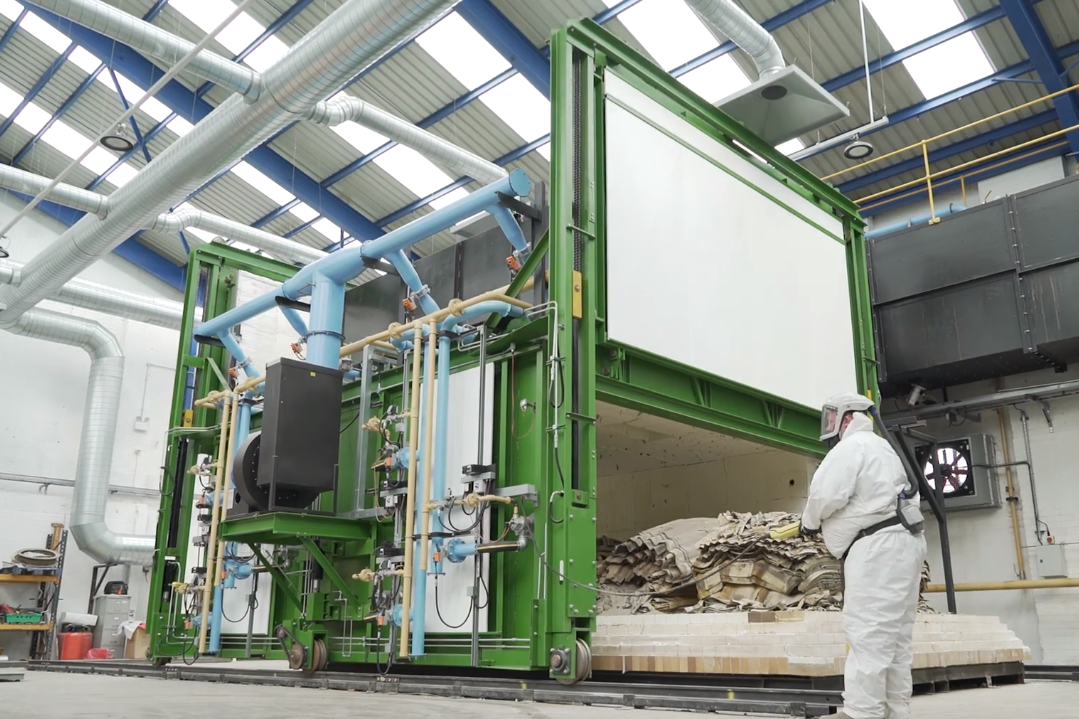
An Innovate UK-funded project has succeeded in recycling cement roof sheets containing chrysotile asbestos into an asbestos-free cement substitute.
Thermal Recycling opened a demonstration plant in Wolverhampton in September 2020 to showcase its process of converting cement roof sheets containing chrysotile asbestos on an industrial scale, in an environmentally safe way.
Thermal treatment changes the chemical and physical composition of the asbestos, producing an asbestos-free material which is then crushed. The end product can be used as a sustainable aggregate.
The resulting product called Calmag (named because it is comprised of Calcium, Aluminium and Magnesium as silicates, carbonates, sulphates, and oxides) has now been proven to be an effective cement substitute.

Two commercial certified laboratories conducted extensive technical assessments of the product’s characteristics, including compression strength, load-bearing capability, and water permeability. The research showed that Calmag is effective as a cement substitute, Thermal Recycling claimed. Market research was also conducted in different sectors to identify potential users of the product.
The project concluded that the best use for Calmag is as a cement substitute, which will reduce the use of cement, one of the world’s largest generators of CO2 emissions.
Graham Gould, chairman of Thermal Recycling said: “This was really important research for Thermal Recycling; identifying a market for Calmag defines us as a circular economy business. This also reinforces our vision for the company; we can not only divert asbestos away from landfill, but also offer a sustainable product to the construction sector.
“There is a pleasing symmetry to being a business that is involved in removing the problem of asbestos for future generations and being able to use the converted material which contributes to creating a better future for that generation.”
Comments
Comments are closed.











Absolutely brilliant, although it would have been more useful 50 or 60 years ago, when the risks of asbestos were first understood and there was a huge amount of asbestos around.
is there anywhere we can see the research and reports into this process
A very interesting development. Are the asbestos fibers converted to a health and environmentally friendly state, or is there a hazardous waste element.
Thank you for your comments:
Mr Ferguson – it would have been better if they had stopped using asbestos 50 or 60 years ago rather than 20 or 30 but at least we can now provide a better way of disposing of it.
Mr Cooze – my email address is [email protected] and if you send me your questions I would be happy to try to answer them.
Mr Koning – the asbestos is converted to a new substance that is no longer asbestos and is no more harmful than the original asbestos from which it was derived. Our process has achieved end of waste status so there is no longer any waste element. T